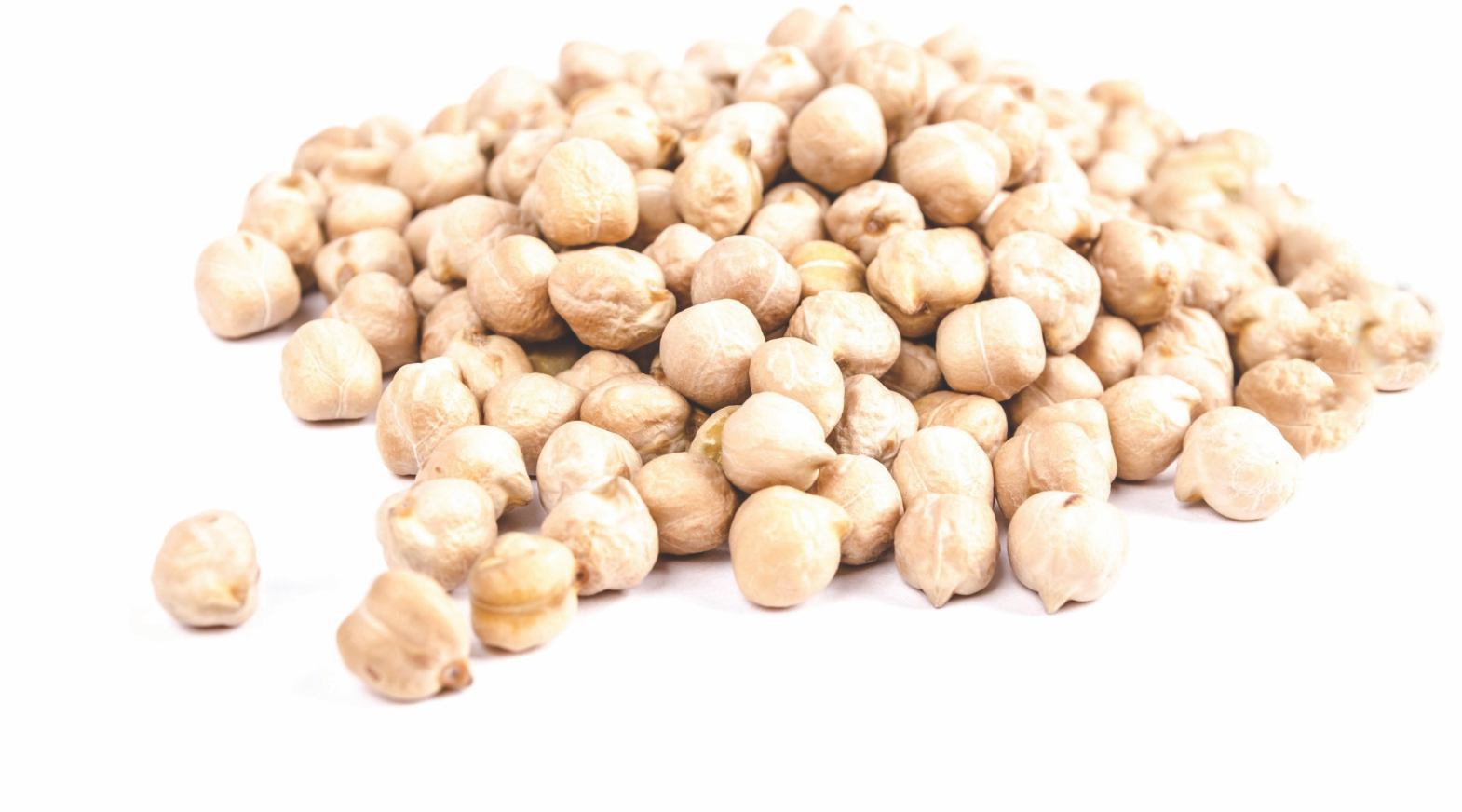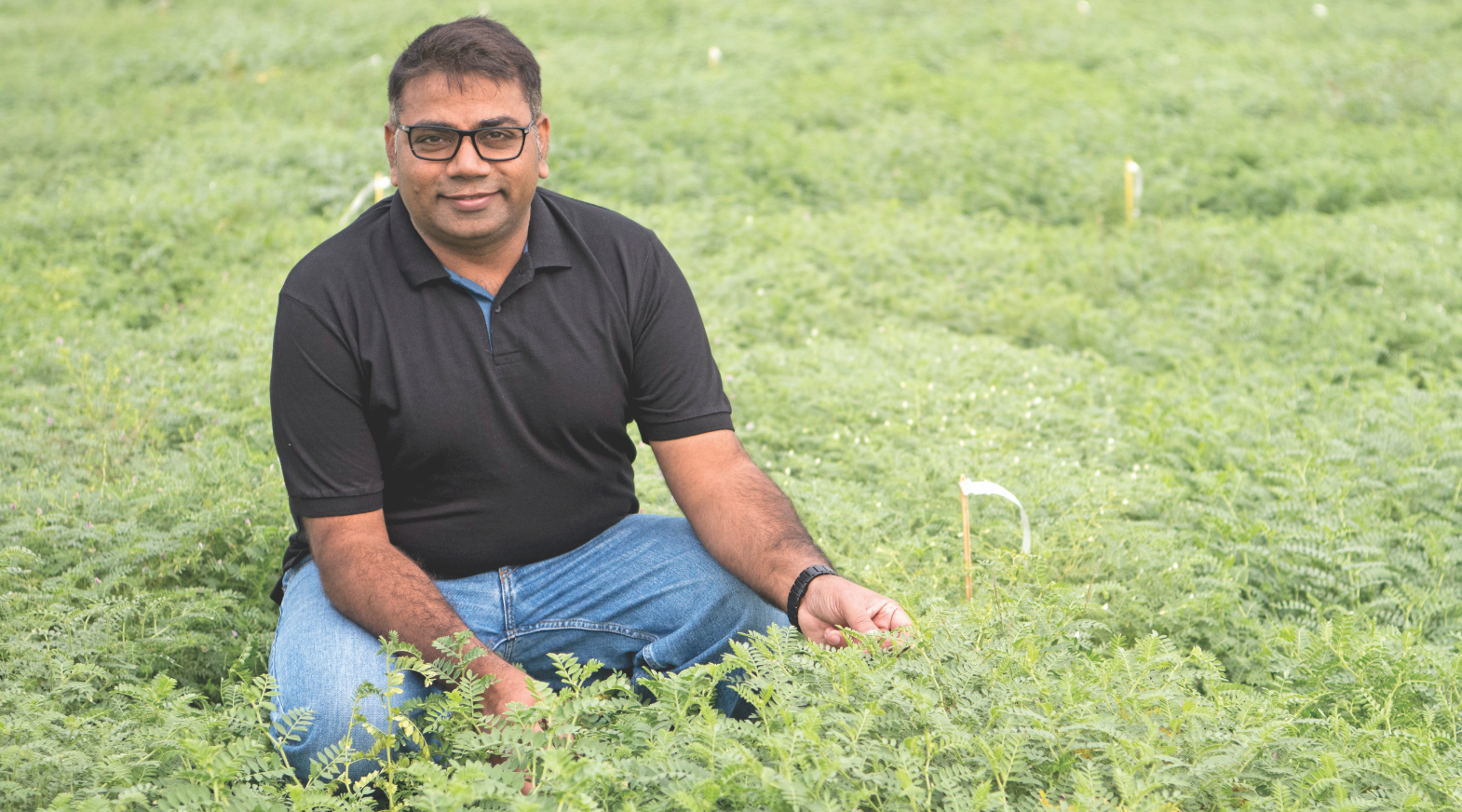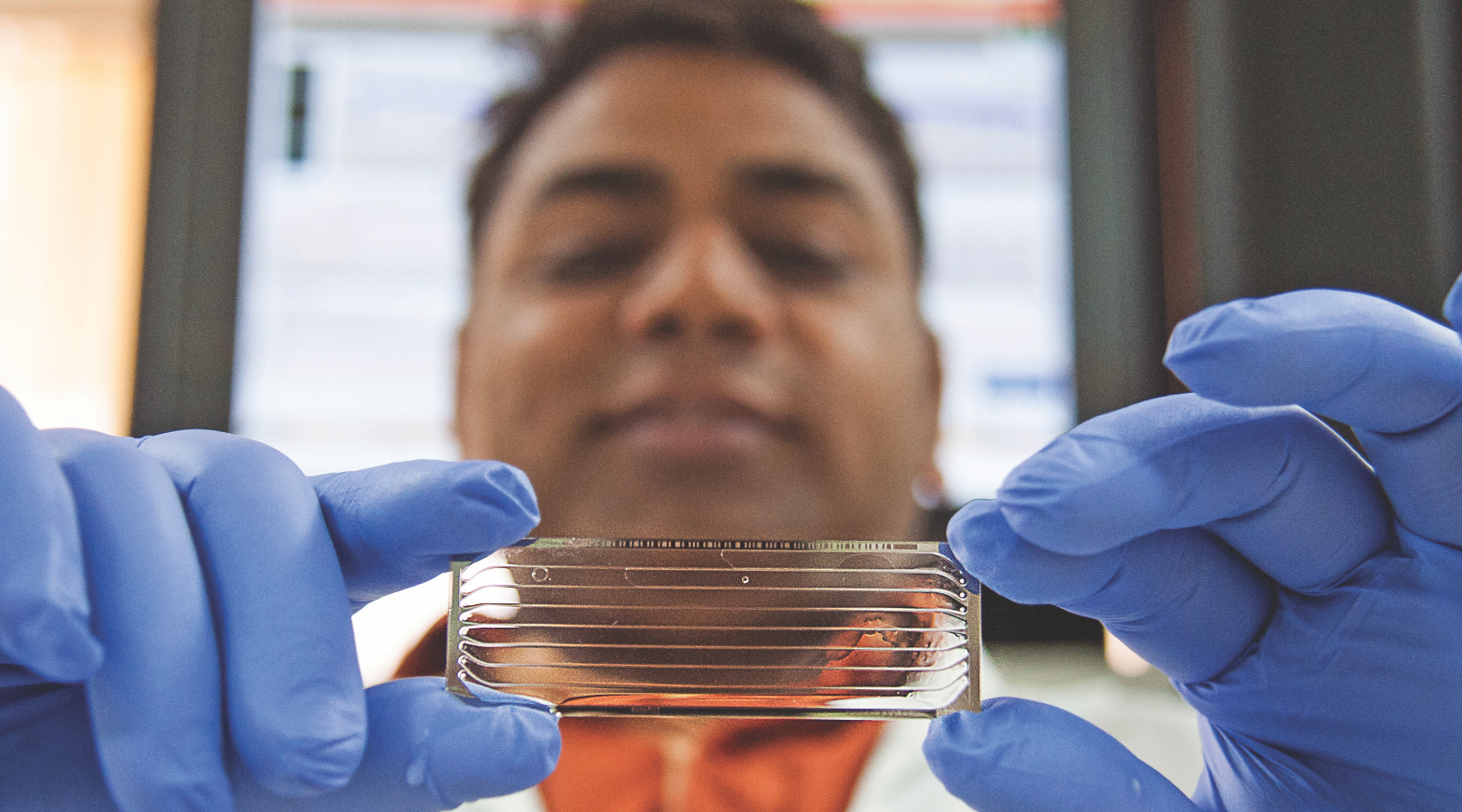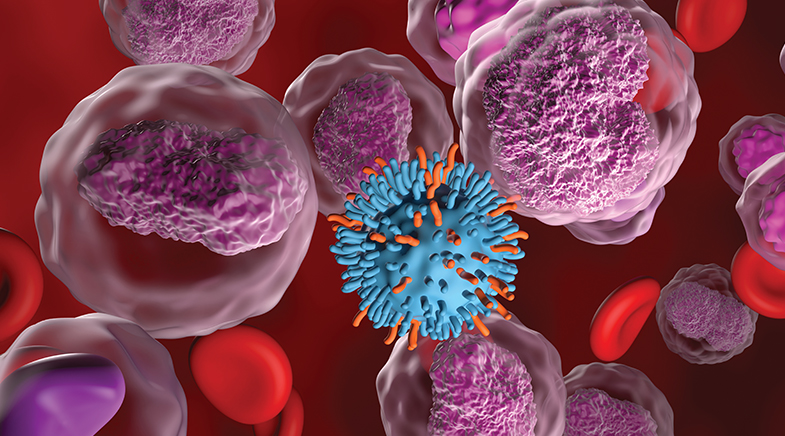The pulse of a farm revolution
-
- from Shaastra :: vol 01 edition 02 :: Jul - Aug 2021

For years, Rajeev Varshney has been using genome-assisted breeding techniques to create hardy crops. Now, he is leveraging AI in the cause of crop improvement.
As an agricultural scientist, Rajeev Varshney was only too aware, back in 2005-2007, that just as with plants, it takes time for ideas to germinate, grow, blossom - and finally come to fruition. That time period cannot be abridged because nature cannot be rushed. Despite that awareness, he struggled to come to terms with the fact that the ambitious research project he had embarked upon, inspired by a speech in 2003 by Norman Borlaug, the Father of Green Revolution, had failed to take root.
That research, at the International Crop Research Institute for the Semi-Arid Tropics (ICRISAT) in Hyderabad, was centred around ushering in a second farm revolution - in pulses and oilseed production - by developing better-yielding crops in the same way that the Green Revolution in India had rendered the country self-sufficient in wheat and rice production.
The Borlaug speech that was to alter the course of his life was delivered at the University of Bologna, Italy. Varshney, then a research scientist at the Leibniz Institute of Plant Genetics and Crop Plant Research, at Gatersleben (in central Germany), was attending a conference in Bologna. There, Borlaug challenged the next generation of scientists to harness the power of genomics and biotechnology to usher in the next revolution in agriculture.

"The conference was a turning point in my career," says Varshney, who is today ICRISAT's Research Program Director – Accelerated Crop Improvement Programme. "I decided to give up the basic research project I was pursuing in Germany and return to India and use the power of gene technology to create better crops for farmers in my country."
Thus inspired, Varshney started his laboratory work at ICRISAT with a lofty mission: to bring prosperity into the lives of small-holder farmers, particularly in central and southern India, who had not quite been enriched by the Green Revolution. The fertile fields in the northern Indian States of Punjab, Haryana and Uttar Pradesh, and the farmers who worked on them, had benefited from the high-yield varieties of wheat and rice of that revolution. But the nutrient-deficient soil and rainfed lands in the semi-arid regions in central and southern India were unable to support these better-yielding wheat and rice crops.
Varshney reckoned that developing better-yielding pulses and oilseeds using genome-assisted breeding techniques would not only enhance the income of small-holder farmers, but ensure the country's nutritional security by putting the semi-arid stretch of land to productive use.
The idea was lofty, but the road was tough.
SMALL POOL
"For two years from 2005, I struggled in my research career," recalls Varshney. "There was only limited genetic information on the crops I chose to work on" - chickpea (Indian chana), pigeon pea and groundnut. He looked around for collaborators, but very few scientists were working on these crops. He could not secure funding for his project proposals.
Self-doubt began to creep in, like weeds in the fields. "It made me wonder if I had perhaps been unwise to choose to research these crops - and whether I would have been better off working on rice and wheat, considering the wealth of genetic information about them that was available," he recalls.
However, those moments of emotional and professional low soon gave way to clarity of purpose. Varshney reckoned that if he wanted to continue researching these ‘orphan crops’, he would perhaps have to spend years to build a strong-enough foundation of knowledge of these crops, on which his team could then carry out translational research.
So, the initial years of his team’s research went into deciphering primary knowledge about chickpea, pigeon pea and groundnut. As they gathered more knowledge on these plants, the roadblocks to creating better varieties in these crops began to clear, and Varshney’s research gathered pace.
Over the years, the institute has collected nearly 20,000 chickpea varieties from various agro-climatic zones around the world, and has created a biobank. With its research expertise, Varshney’s team has generated genome sequence data and phenotypic data (that is, observable characteristics) of 3,000 chickpea lines from this collection. The idea is to use the data from these 3,000 lines as training inputs for machine learning algorithms and then predict the phenotype of the rest of the 20,000 chickpea varieties based on their genomic data. The team has collaborated with three premier research institutes on this project: the International Maize and Wheat Improvement Center (CIMMYT), based in Mexico; The University of Western Australia; and the Skolkovo Institute of Science and Technology (Skoltech), in Russia.
THE TRAIT SEARCH
In traditional plant breeding experiments, the breeder makes a cross between two desirable parents, each carrying a distinct desirable trait. Some of the progeny obtained through this combination is expected to carry both the desirable traits from its parents. However, finding out which offspring carries the desirable traits is time-intensive. It requires scientists to put all the progenies in a large field and wait until they start to display the required traits.
While some traits such as leaf shape manifest themselves earlier in the plant life, breeders are required to wait until the end of the life cycle of the plant in order to observe traits like seed quality. This may vary from a month to several years.
Apart from the element of time, plant breeding is a mammoth exercise. Plants produce a large number of seeds after pollination. This means that scientists have to screen or look out for traits in many individuals so as to not miss the required traits. Moreover, this exercise of screening/looking out for desired traits needs to be carried over several generations in order to stabilise or fix the favourable traits.
Using the genome-assisted breeding approaches that Varshney's lab has used to create better crops, one can screen the progenies even at the plantlet stage – and identify the ones that carry both the desired traits. This is because although plants display their traits at a given time in their life history or under certain given conditions, they have the genes associated with this trait ingrained in their genome throughout their life, which can be screened in the early stages of the plant cycle.
Using this approach, the group has developed a drought-resistant chickpea variety 'Pusa Chickpea 10216', which has an overall mean weighted yield advantage of about 16% as compared to its predecessor. Similarly, the team has developed a chickpea variety that is resistant to fusarium wilt disease named 'Super Annigeri 1', which has a 7% mean yield advantage for farmers over its parent 'Annigeri 1'.
Not only have the drought-resistant chickpea varieties developed by Varshney been tested and are being used in India, but they have also been released in Ethiopia and are being tested in a few other countries. Although these varieties fulfil the promise of better yield, the road to developing these varieties was long and arduous. The seeds of the plants that now stand erect in the field were sown as far back as in 2006!
THE NEXT REVOLUTION
Varshney's lab, in the lush green 3,500-acre ICRISAT campus in Hyderabad, has now been at work for over a decade and a half in order to create better crop varieties. But its methods are increasingly getting more sophisticated, which promises to save both time and labour. His team is harnessing the power of artificial intelligence (AI) to aid plant breeding experiments in their endeavour to create drought-resistant varieties of chickpea. The goals of the program, if realised, will open up avenues for better plant varieties.

"With the advent of large-scale and high-throughput sequencing technologies, we are now able to generate large high-density genome sequencing data and also transcriptome data from various parts of a plant including at single cell level," says Varshney. In his estimation, AI holds enormous promise for plant science. Using remote-sensing and drone technology, scientists can produce phenotypic data as well. Soon, scientists will be able to integrate the genomic sequence data and phenotypic data using AI and machine learning techniques "which will enable us to predict the performance of a line with higher precision and efficiency."
Listening to a Norman Borlaug lecture at a Bologna conference in 2003 changed the trajectory of Varshney's career: it inspired him to return to India to "create better crops for farmers".
Today, as Varshney stands amidst a field planted with drought-tolerant chickpea and nutrition-rich groundnut bred by his research group, he is overcome by a sense of satisfaction that his mission to return to his homeland and serve the farmer community is closer to being accomplished.
Having harnessed the power of the gene revolution, Varshney is now looking to leverage the power of AI in crop improvement programs. The genome-assisted plant breeding approach rested on a few handfuls of genes, but AI and Big Data sciences will allow the analysis of thousands of genes or whole-plant genomes at one go. This will allow plant breeders to optimise for more than two traits as in the case of genome-assisted breeding.
The challenge that Borlaug set for scientists at that Bologna conference - which Varshney took to heart - has been well and truly joined. Genomics, biotechnology and AI are leading the charge towards the next agricultural revolution.
Have a
story idea?
Tell us.
Do you have a recent research paper or an idea for a science/technology-themed article that you'd like to tell us about?
GET IN TOUCH














